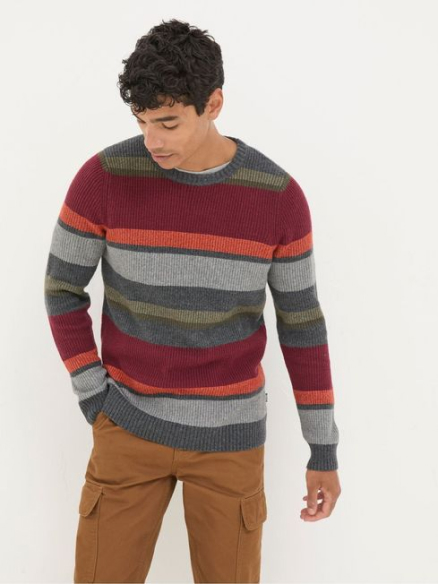- Home
- Knitwear Care Guide
- Wash or dry clean: Make sure the knitwear is clean before storing it to avoid attracting pests like moths. Follow the care instructions on the label—some knitwear can be machine-washed, while others may require hand washing or dry cleaning.
- Dry thoroughly: Make sure knitwear is completely dry before storing to prevent mildew or mould.
- Fold, don’t hang: Always fold knitwear rather than hanging it. Hanging can cause knitwear to stretch out of shape due to the weight of the fabric, especially at the shoulders.
- Use tissue paper: If folding, place sheets of acid-free tissue paper between layers to help maintain the shape and to prevent creases forming.
- Cool, dry place: Store knitwear in a cool, dry place away from direct sunlight, which can fade colours and weaken fibres.
- Avoid damp areas: Avoid storing in damp areas like basements or attics, where humidity can cause mould and mildew.
- Breathable storage bags: Use breathable cotton or linen storage bags to protect your knitwear. Avoid plastic bags, as they can trap moisture.
-Plastic bins with cedar blocks: If you prefer plastic bins, make sure they’re ventilated. Add cedar blocks or lavender sachets to repel moths naturally.
- Vacuum-sealed bags: While vacuum-sealed bags save space, they can compress and damage delicate knitwear fibres, so use them cautiously for sturdier items only.
- Cedar or lavender: Place cedar blocks, lavender sachets, or other natural moth repellents in your storage area to deter pests. Avoid direct contact with the knitwear to prevent oils from staining the fabric.
- Moth traps: Consider using moth traps in the storage area as an additional precaution.
- Rotate and air out: Periodically take your knitwear out of storage to air it out and check for any signs of damage. This helps to maintain freshness and prevent prolonged creases.
- Remove pills: Before storing, remove any pilling with a fabric shaver or sweater stone. This prevents the pills from embedding into the fabric over time.
- Organise and label: If you have multiple pieces of knitwear, organise them by type, season, or colour, and label your storage containers for easy access.








